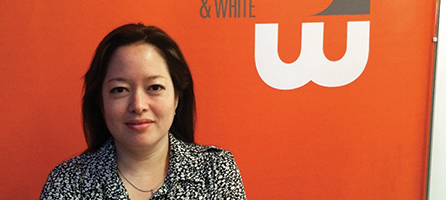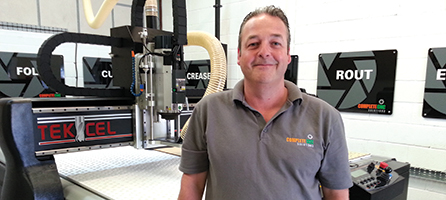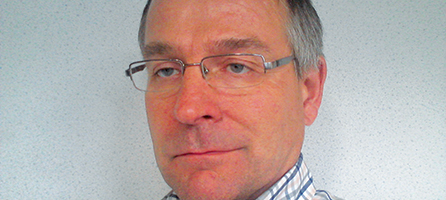
Robert Marshall, vice president of market development, AXYZ International
Whilst it is true that advances in CAD/CAM software have influenced the development of CNC routers, it can be argued that advances in routing technology have had a corresponding effect on the development of CAD/CAM software. Neither could exist without the other, and therefore developments in both have tended to go hand in hand.
An excellent example of this trend would be the AXYZ PANELBuilder system, a combined high-performance CNC router and specially developed software for processing large volumes of aluminium composite materials (ACM) used widely in the sign industry. In this case, the software was the key factor to achieving the high levels of productivity.
Over the past ten years, there have been major advances in software development in terms of ease of use, affordability and higher productivity that collectively have helped open up new markets and applications for CNC routers. Although creating a machine program remains more difficult than running it, software systems have evolved to the point where it is no longer necessary to employ expensive personnel to carry out the programming. As a consequence, the total cost of ownership is much lower than hitherto and this has enabled an increasing number of companies to engage with CNC technology.
More powerful programming software has also led inevitably to more complex and larger programs to run the machine. The recently developed AXYZ A2MC machine controller has a massive 16GB memory for program storage as well as providing network connectivity for error-free program transfer.

More powerful programming software has led inevitably to more complex and larger programs to run the machine”
In operation, the controller can update the motion of the cutting heads at a rate approaching five million times per second. The result of these performance capabilities is high-speed 3D machining and an incredibly smooth and superior quality cut finish that would have been impossible with earlier machine controllers and programming systems.
Integrated solutions

Eiko Ichikawa-White, director, Blackman and White
At the front end of the process, new techniques in vision software drive machines to be faster, simplifying prepress throughput. The ability to reduce file preparation times by eliminating the need for registration marks offers ground-breaking simplicity, time and cost savings. Some of the biggest advances come from the integrated total solution with MRP.

The ability to reduce file preparation times by eliminating the need for registration marks offers ground-breaking simplicity, time and cost savings”
Web-to-print solutions enabling full traceability from bar coding to packing slips have also created a new platform of expectation, as it is no longer enough to just cut shapes by importing the dxf file. The operator needs to have the complete solution to take the machine into a workflow solution particularly, for example, in the previous case of web-to-print, where each customer will have a different print file and management of each job within the process is critical for cost efficiency and speed in this very competitive industry.
Furthermore, the variety of substrates required to be cut continues to increase, requiring print houses to be highly flexible and responsive. The growing popularity of textiles and market demand for intricate shapes and arcs adds to the necessity for the cutting hardware to be a multi-tooled solution.
Blackman and White has evolved a machine to enable blade, router, and laser technology to facilitate these advances and respond to this need for flexibility within the total solution. Fast tool change is important, and the accuracy and cut speed has to complement the tight lead times and quality customers expect.
Making the cut

Julian Sage, owner and managing director, Complete CNC solutions
There’s an interesting question. There will always be an element of catch-up being played on both sides of the table, however, it’s the customers’ applications for both technologies that’s the primary driver for both. In other words, speaking for the routing side of the discussion, we are market and customer led.

There will always be an element of catch-up being played on both sides of the table, however, it’s the customers’ applications for both technologies that’s the primary driver for both”
If you consider, for example, the still growing appetite that has risen in recent history for contour-cut printed digital output and, perhaps more importantly, how the need to produce it can be profitably fulfilled for those who are making the most of the market potential, then you are on the path to finding the answer.
At Complete CNC Solutions we have developed and evolved a system for cutting complex outlines to very tight tolerances— often from resistant and rigid materials that lighter finishing equipment with its roots in film cutting finds challenging. Design software, and printing systems themselves, both introduce very subtle output image distortions that the human eye would struggle to discern but that could result in cutting hardware wandering into image areas or producing very sloppy results.
Our Tekcel Opticam system generates cutting paths based on the outline geometry from the imaging file, corrected according to data captured by a device, like a camera, integrated into the Tekcel router that is actually doing the cutting. By approaching the need in this way from an engineering sense, the software can perform the corrections needed to produce perfect cut results to tight tolerance time after time with minimal operator involvement.
The number of new systems we sell with this option integrated, and those we retro-fit, is a key indication that the ability and need to perform what used to be a costly error prone operation is still growing. It’s a great example of what happens when hardware engineering and software meet on speaking terms.
Evolution is key

Steve Leopold, director, Leopold Professional Imaging
Over the past two decades CAD and CAM software has begun to become more and more commonplace outside of industrial processes, parallel to the advancements in home computing. Providing they have access to the required computing power, as well as the readily available programs such as Illustrator, Quark, SolidWorks, Rhino 3D and many more, those not from within large scale manufacturing industries are still able to try their hand at design, opening up a world of innovation and original designs.
As more people begin to experiment with such software and publish their results as open source files, CNC routers and cutters have been forced to advance in order meet the demands of the ever more intricate designs they are being pushed to create. Over time they have evolved to become faster and more precise in their crafting, allowing for a considerably higher standard of quality in regards to the finished product.

CNC routers and cutters have been forced to advance in order meet the demands of the ever more intricate designs they are being pushed to create”
Due to the versatility of CNC routers, in their ability to create a single item from any particular file or just as readily a multitude of consistently identical objects, it is not unrealistic to foresee the continued commercial development of CNC routers in the near future. Combined with the various commercially available programs, it is possible that a less exclusive proportion of the sign industry will be adequately proficient at using such software to design and create to the same quality as those working in mass production.
This could usher in a new era of production as small companies gain the ability to produce items tailor made for themselves, instead of buying an item that has been replicated innumerable times and is unique to no one. This could simultaneously indicate a possible end to the mass production techniques of 20th and 21st centuries.
Your text here...